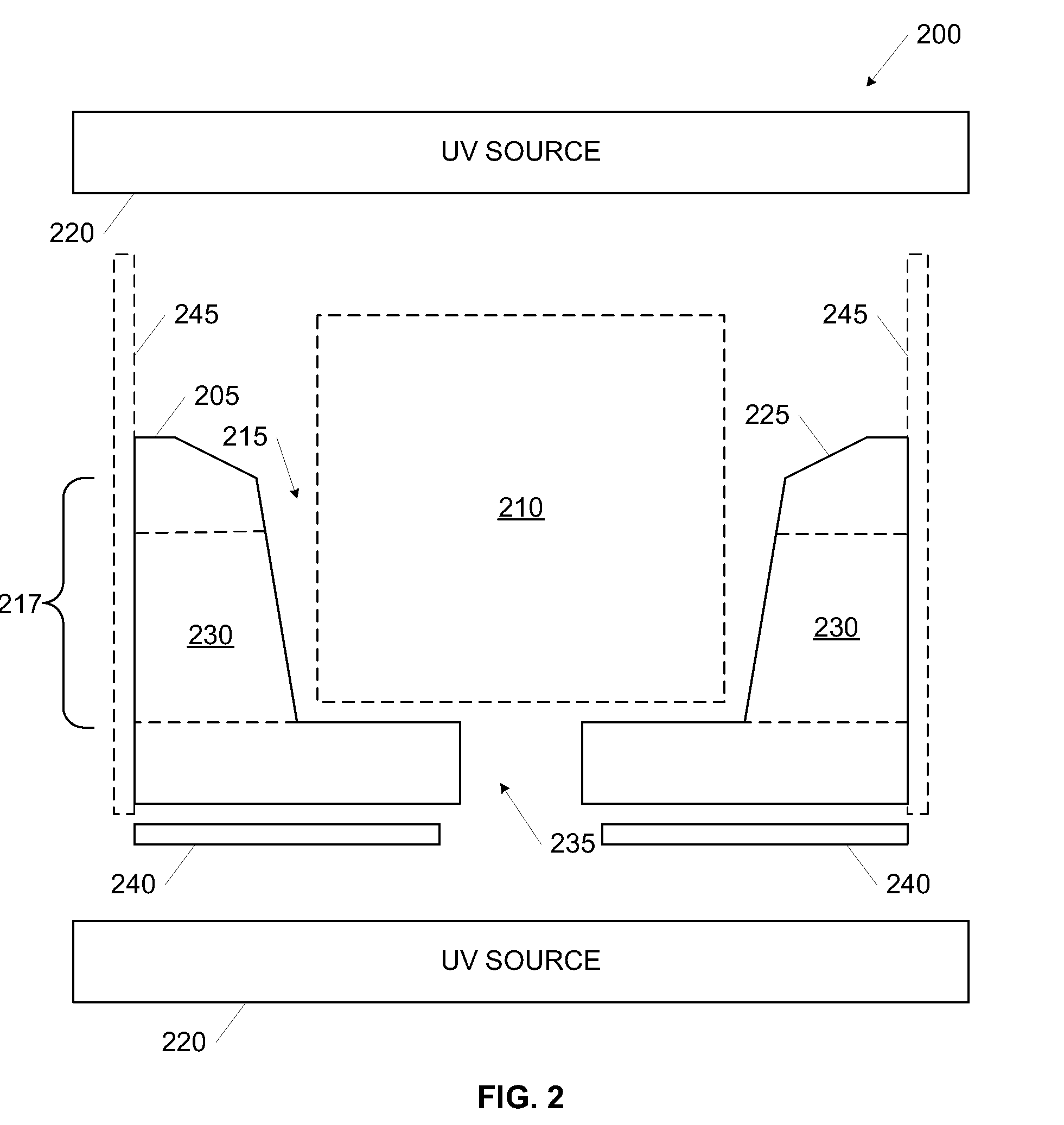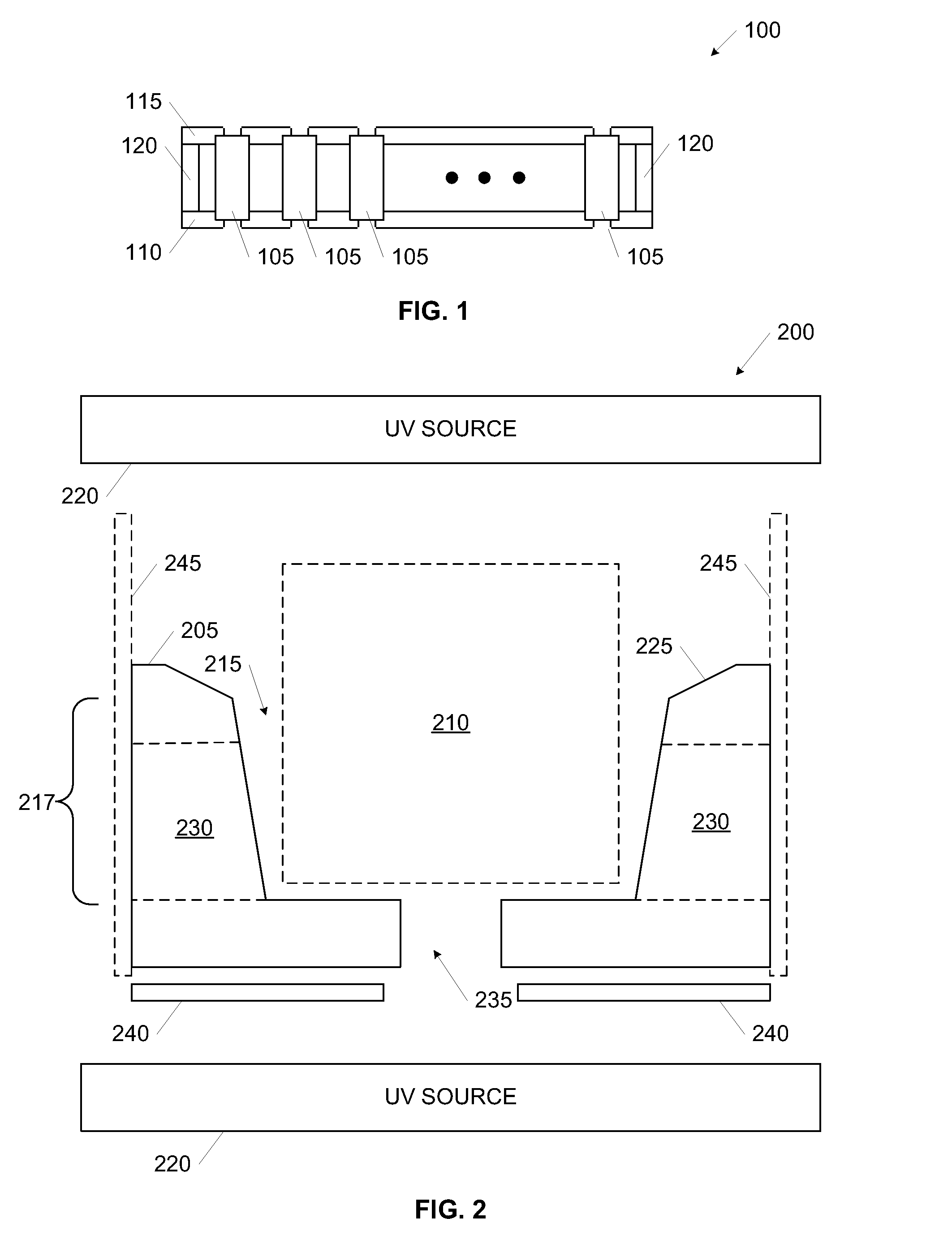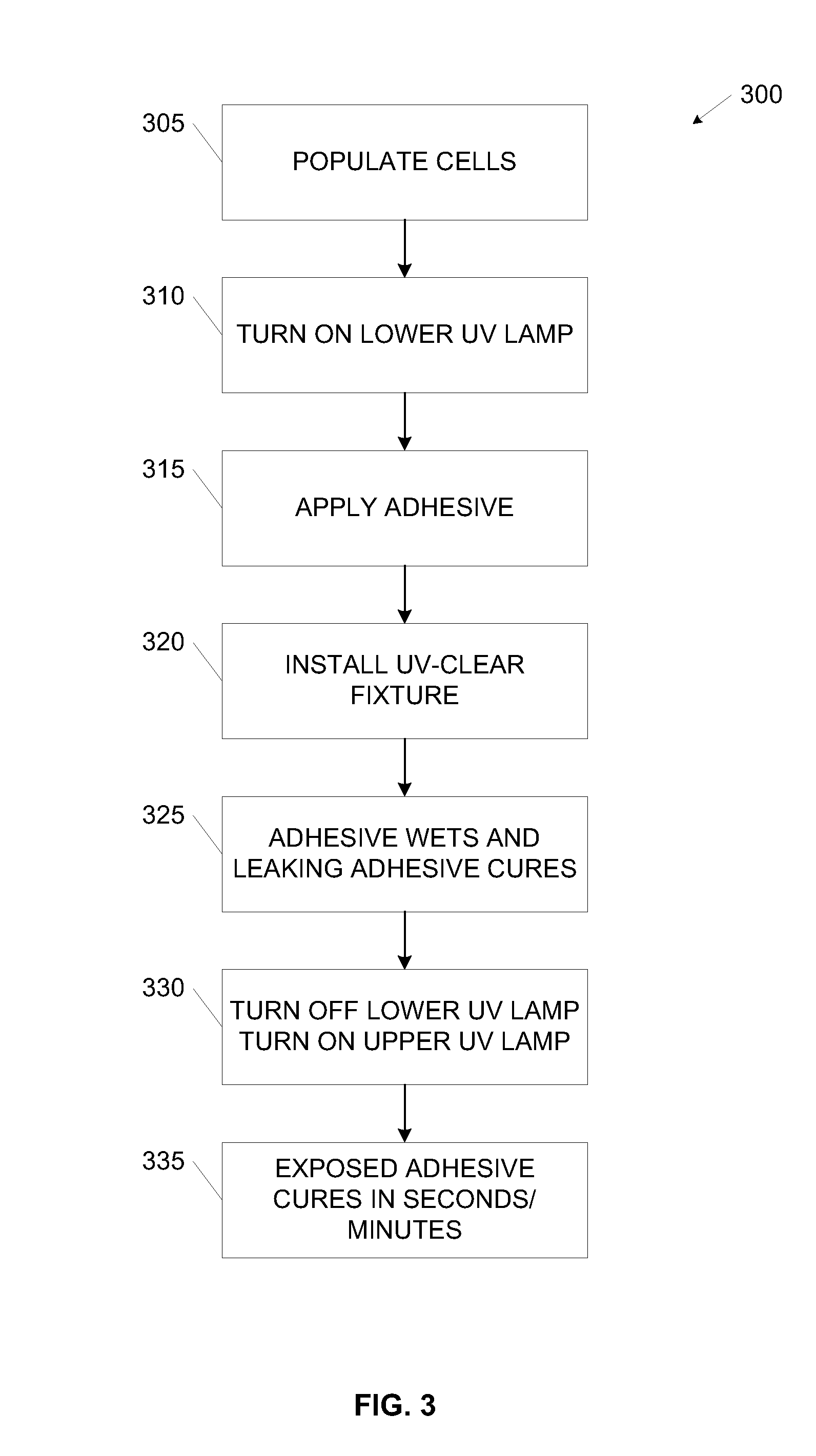[0010]Disclosed are methods and systems for decreasing costs (expense, mass, and / or cure time) associated with use of adhesives when assembling modularized components, particularly for assemblies having many elements such as for example battery modules used in electric vehicles. The methods and systems enable use of high-wettability adhesives (defined generally in this application as low viscosity and / or low surface tension adhesives) for assembling such modularized components. A first method including (a) dispensing a high-wettability adhesive into a first module fixture populated with a plurality of elements wherein the first module fixture provides a plurality of bonding wells with each bonding well accepting a first portion of one or more of the elements with the module fixture including one more apertures communicated with one or more of the bonding wells, the adhesive being selectively curable upon application of a curing modality; (b) applying the curing modality selectively to a first portion of the dispensed adhesive in a seal zone, the seal zone including one or more regions surrounding the apertures wherein the dispensed adhesive in the seal zone is sufficiently cured to inhibit significant quantities of the adhesive from emerging from the apertures while the adhesive continues to be dispensed into the module fixture wherein the curing modality is not applied to a second portion of the adhesive outside of the seal zone; and (c) applying the curing modality to the second portion of the dispensed adhesive.
[0014]Assemblies, such as for example battery packs, composed of a large number of elements (e.g., cells) on the order of tens to hundreds to thousands or more elements, implementing preferred embodiments of the present invention preferably have a method of mechanical integration that is low cost in terms of expense, mass, and
process time. The use of appropriate high-wettability adhesives permits a stiff, robust, electrically insulating mechanical connection to the battery module fixture. The high packing density of cells within a
battery pack limits the room available for dispensing adhesive evenly throughout a battery module, however the high-wettability adhesive is better suited for even distribution, particularly when the module fixture is adapted with ramps, wicking channels, and guiding surfaces and the like to direct dispensing adhesive into all populated bonding wells. Features in the module fixture that allow electrical interconnects on both ends of each
cell may provide potential leak pathways for the adhesive during dispensation. Curing modalities are applied to adhesive exiting from the apertures to seal the module fixture and allow the adhesive to continue to fill the bonding wells and wet the bonding surfaces around the elements populating the bonding wells. The high wettability adhesive efficiently fills the bonding wells around the elements to be bonded, permitting the bonding wells to be substantially filled without significant overfilling (that is, the bonding wells are filled sufficiently to wet all the bonding surfaces without excessive (significant non-structural use). Ports between the bonding wells, a use of ramped guiding surfaces, and other features of the fixtures promotes even distribution of the high-wettability adhesive. A curing modality is applied to all of the adhesive in the bonding wells after the bonding surfaces are properly wetted.
[0015]In some of the preferred embodiments, the curing modality includes application of light (e.g.,
ultraviolet radiation) which means that at least selected structures of the module fixture that define the bonding wells where the adhesive is dispensed (and where curing and bonding occurs) is transparent, and may therefore be visually inspected. A use of a cure indicator associated with the adhesive, such as color or some other visual cue, is advantageously used in certain embodiments to provide a quick assessment of the quality and / or status of the curing process in the bonding wells.
[0016]The embodiments of the present invention includes designs and methodologies that promote the use of a limited amount of high-wettability adhesive by selectively curing (e.g., UV-curing) the adhesive as it attempts to exit out of the apertures. As noted above, due to the high wettability, the application area may remain limited without
disadvantage. The high-wettability adhesive means that a time until the bonding wells are filled and that
wetting of all bonding surfaces has occurred is relatively short (in relative terms compared to conventional systems and absolute terms). In addition to the savings in
process time, a total quantity of adhesive used is greatly reduced, removing mass and expense from the assembled module.
[0019]There may be many different implementations of embodiments of the present invention including permutations of one-part and two-part adhesives with single-stage or multi-stage curing or sealing formulations, with the staging being during dispensing and / or curing. For example, one embodiment includes use of a two-part high-wettability adhesive that “gels” or “skins” upon application of a sealing modality while curing in a more conventional manner. The gelling creates a barrier and seals the apertures preventing leaks and permitting the adhesive to fill the bonding wells and wet the bonding surfaces. In other applications, it is possible to vary the adhesive properties during dispensing such that a first phase adhesive is particularly formulated to enhance the sealing properties by interaction with a curing / sealing modality while a second phase of adhesive being dispensed is particularly formulated to bond the fixture to the elements.
 Login to View More
Login to View More 


